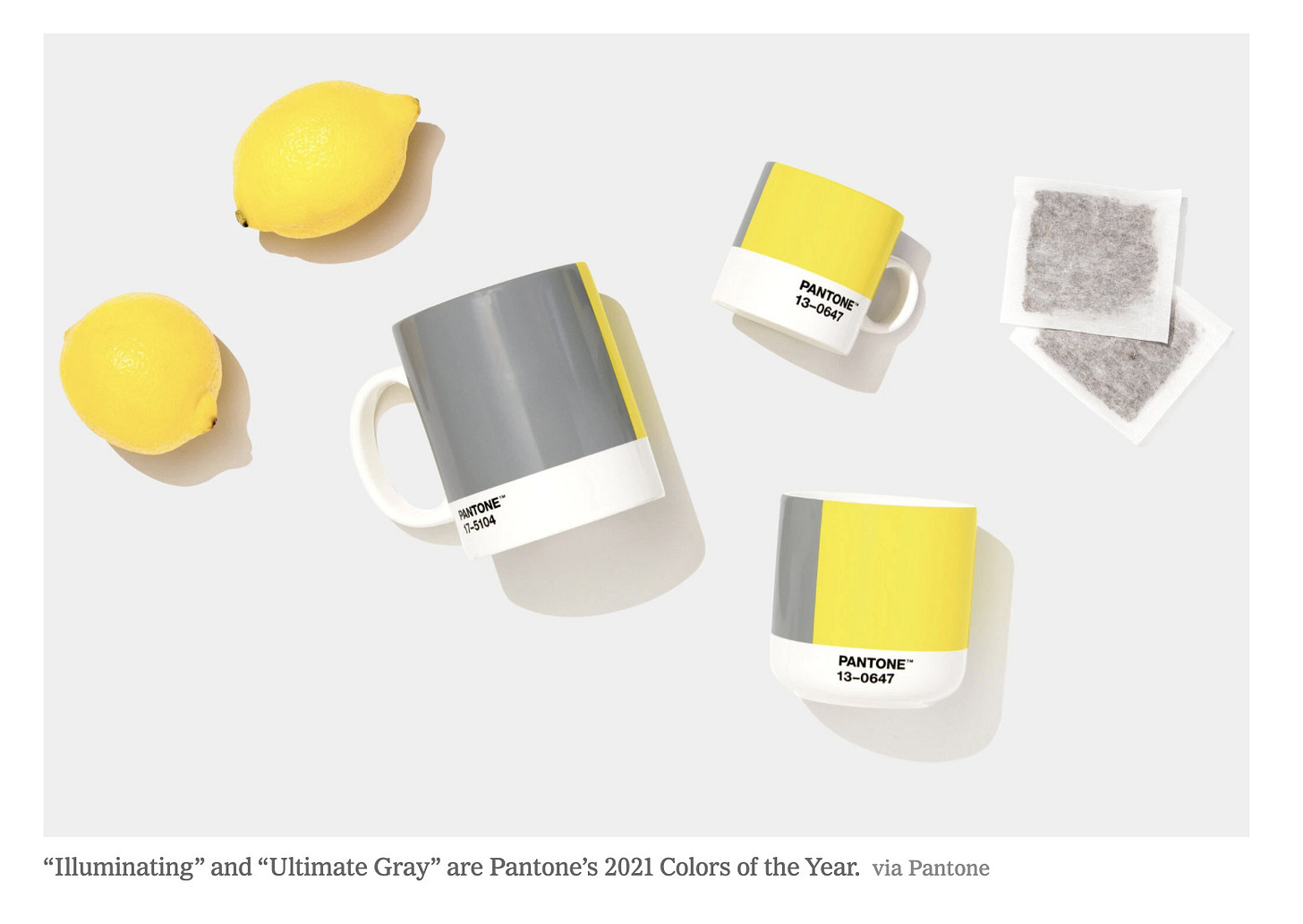Hello! I'm Nate Kadlac, and this is Plan Your Next. It’s a newsletter that connects design, creativity, and how you prepare for your next thing.
Every Sunday, I aim to make this newsletter as timeless as Johnny Cash dressing in all black. If you’re new here; join us.
What’s new this week?
🎤 I had the pleasure of being on Paul Lecrone’s Penguin Latte Podcast. We dove into an array of topics over the course of two hours, and he’s created a killer trailer for it.
✍️ I’ll be joining the Compound Writing community at the start of the year. I love what Stew Fortier is building over there. Like car insurance, I want a reliable community of writers that can tap into at any given time.
Good morning from LA!
Right now, my website is most organically discovered by the keywords, “make money selling knives,” and placing fifth on Google for “introvert face masks.” Not exactly what I was aiming for when I started writing consistently eight months ago.
If I had known this then, I might have lost all energy to even start. Either that or imagined the possibility I quit my career as a designer and started selling knives once again.
When you’re starting out in a creative endeavor like writing, you’ll inevitably get asked that lonely question, “what are you writing about?”
This question is like seeing a few scattered boxes on a bare floor and then having to choose one, sitting with the constraints of it. This box is your niche, your container you choose not to deviate from. And it can be an overwhelming decision that can stop you from even getting started.
If you’re twitching at the thought of choosing a box to fit into, there’s a better way.
Write out all of your ideas
Toss down all of your ideas onto a piece of paper. Get messy and chaotic. Make sure to start with the bad ideas first. This process is similar to morning pages which Julia Cameron talks about in her book The Artist’s Way. A method of pouring out your ideas as a stream of consciousness, removing the junk that inevitably gets flushed out first.
Select 5-10 ideas
Next, pick a few of those ideas that resonate with you deeply. The ones that spark joy. Create a list of about 5-10 which you can come back to. This list might get smaller, but it might get larger. There are no rules at this stage of the process.
Consistency over selectivity
The goal in this step is to start chasing the inspiration that you have started to curate. Don’t worry about whether it’s going to change your life, others will love it, or Google’s algorithms are going to even care. Your first few dozen articles should be for you, and to help you get a better sense of what you enjoy writing about.
Listen from the inside-out
Inevitably, you’re going to start to learn what you enjoy thinking about. If you don’t love the process, then you’ll quit without attempting the hard work. The voice inside you will start to get louder, you’ll have a better appreciation and love for what you’re doing as you keep at it. Your audience will also act as a voice and sounding board, letting you know what they love to hear from you.
It took James Clear about 100 articles before he started writing with more focus on habits and routines. It’s what resonated with him and his audience most.
Anne-Laure Le Cunff built up a newsletter of 300 subscribers before she re-positioned her newsletter after finally discovering what she wanted to write about.
“How you climb a mountain is more important than reaching the top.”—Yvon Chouinard
What’s next for me?
Here I am, 38 newsletters in and I’m still chatting it up about knives and creativity. I am at a place where I find joy in the process, not knowing where it’s going to take me. But I aim to get to #100 and look back with more clarity, hoping I’ll have a bit more insight then.
🧑🎤 Add layers to your next self
Thinking about yourself as a cubist is potentially one of the best ways I can think of getting excited about what you have to offer.
🌚🌕 Next year’s colors: Duct tape and lemons
The color choices for next year certainly feels scripted in a way. But I’m here for the possibility of 2021 being brighter in many ways.
Get ready for Ultimate Gray and Illuminating. Or, in normal-speak: the light at the end of the tunnel. —Vanessa Friedman
🪡 Discovering your niche through consistency
How Successful Writers Actually Picked Their Niche is a great article on how picking your niche is really only accomplished after you put in the time to learn from your own process, and from the feedback of others.
If you feel stuck, don’t invest more time crafting a brilliant forward-looking strategy. Instead, ask yourself what ideas you would be most excited to write about right now — then go do it.
In hindsight, it will all look like part of the master plan.
👋 See you next Sunday
As always, my calendar is always open to chat about your crazy ideas. Let’s find a time to chat.
Have a great week,
Nate
Twitter: @kadlac
Web: kadlac.com



















